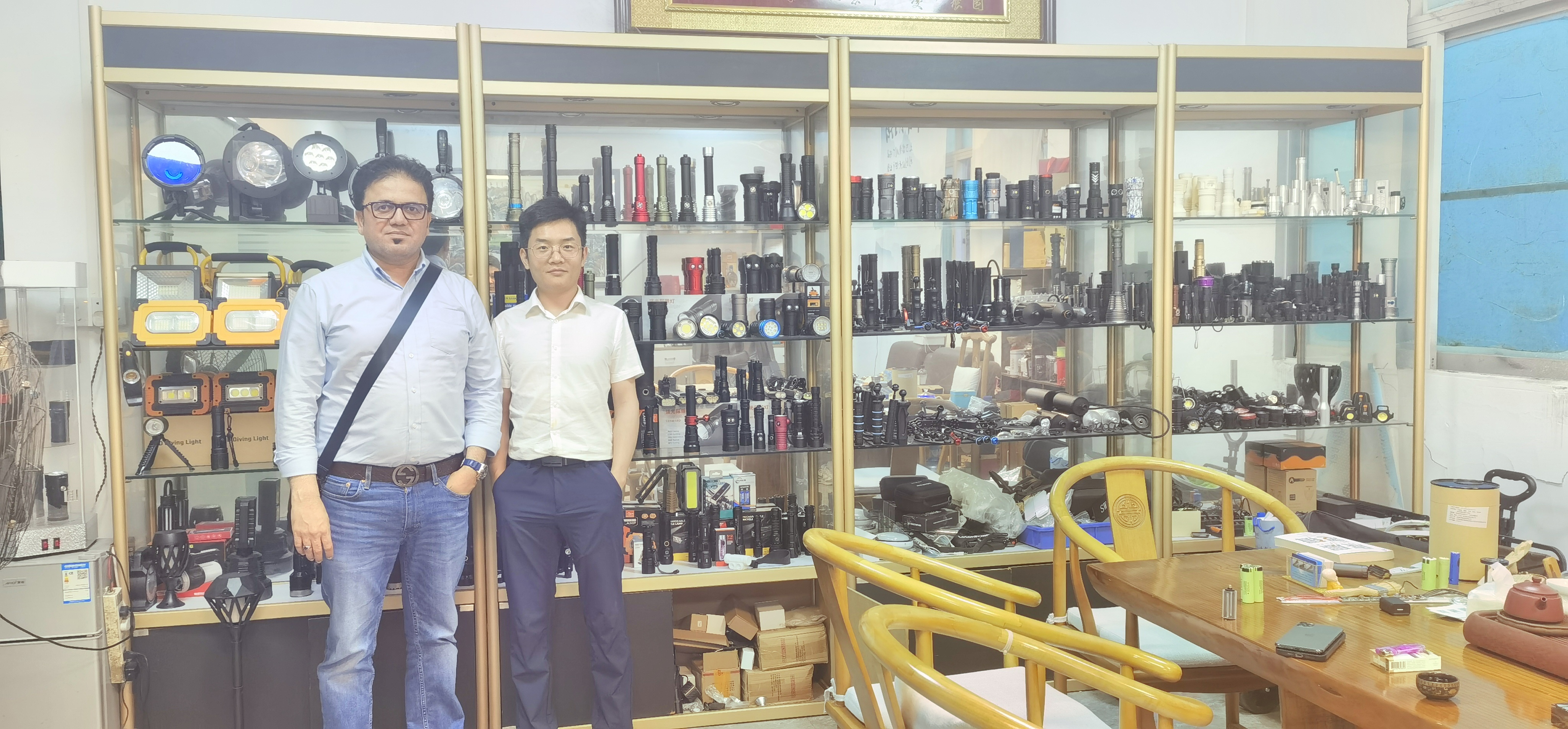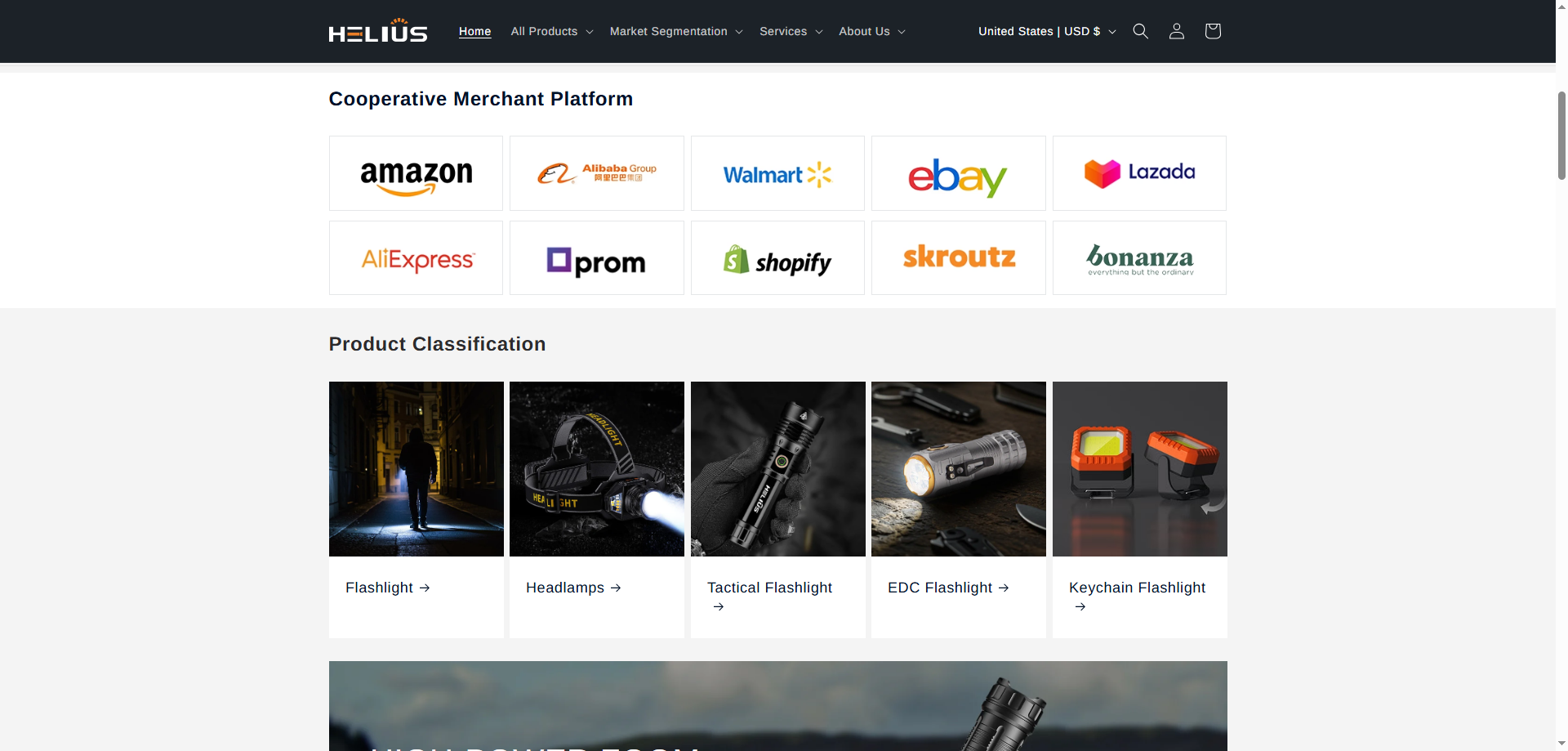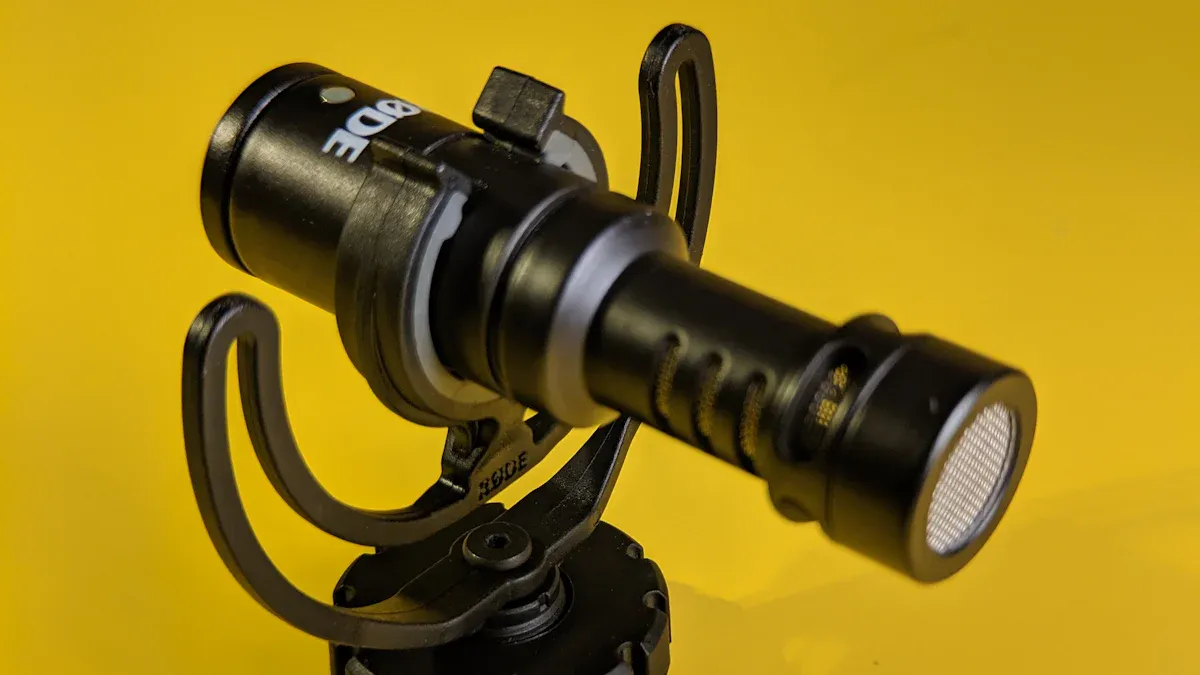Key Features to Look for When Supplying Flashlights to Your Target Market

As a flashlight supplier, you need to match flashlights to your customers’ needs. Different people want different flashlights. Some want EDC models for daily use. Others want headlamps for outdoor fun. Some professionals need tactical flashlights. You make customers happy when you match features to their needs. Picking the right flashlights for each group helps you build loyalty. It also makes people buy again and meet their needs in the flashlight market.
Key Takeaways
Learn about your customers and what they need. Match flashlight types and features to their needs. This helps make customers happy and loyal.
Look at key features like brightness, run time, and beam distance. Also check durability, power source, and portability. These help you pick the best flashlights.
Sell popular flashlight models that have good quality and price. Make sure they are easy to use for different people. This can help you sell more.
Give customers ways to customize flashlights. This helps them show off their brands. It also makes your flashlights special.
Teach customers about flashlight terms and features. This builds trust and helps them choose well. It can also make them come back to buy again.
Know Your Target Market
Customer Segments
You should know who buys flashlights. Each group wants something different.
Residential users use flashlights at home. They need them for emergencies or when the power goes out. They also use them for small jobs around the house.
Professional users work in jobs like construction, auto repair, home inspection, and security. These people want flashlights that last a long time and work well.
Outdoor enthusiasts like camping, hiking, and survival. They want flashlights that are easy to carry and strong enough for rough places.
Industrial users work in mining, manufacturing, or car factories. They need flashlights that work in tough places and can handle hard use.
Where people live also changes what they want in a flashlight. For example, people in North America may want rechargeable batteries. Others may care more about price. You need to notice these things to give customers what they want and keep up with the market.
Use Cases
People buy flashlights for many reasons. You should know the main ways people use them.
Many people want everyday carry flashlights for safety and to make life easier. These often use rechargeable batteries to save money.
Professionals need lights that let them work with both hands. Mechanics and builders use headlamps or clip-on flashlights for their jobs.
Being ready for emergencies is very important. People want flashlights that can use hand cranks or solar power.
Some people want small penlights for looking at things up close.
Industrial users want flashlights that can handle water, chemicals, and have safety labels.
Outdoor lovers want flashlights with different beams and modes like strobe or SOS for many situations.
Professionals want controls that are simple to use, even with gloves on.
Things like lanyards, clips, or straps help people keep their flashlights safe while working.
You need to match your flashlights to these uses. This helps you meet what customers want and keeps them happy.
Flashlight Types

Picking the right flashlight type helps you help your customers. Each type is good for a different group and use. The table below shows the main features for EDC, headlamp, and tactical models.
Feature | EDC Flashlight Users | Headlamp Users | Tactical Flashlight Users |
|---|---|---|---|
Size | Compact, pocket-sized | Lightweight, worn on head | Larger, fits hand securely |
Brightness | Moderate, close-range tasks | Adjustable, 100-600+ lumens | High, 1000+ lumens, long-range |
Modes | Simple, easy to use | Multiple (spot, flood, color) | Many (turbo, strobe, SOS) |
Durability | Balanced with portability | Water-resistant, durable | Rugged, impact/water resistant |
Power Source | Convenient, varied | Rechargeable/hybrid options | Rechargeable, fast charging |
Usability | Intuitive controls | Simple, easy to adjust | Glove-friendly, quick switches |
EDC Flashlights
EDC flashlights are great for people who need light every day. Outdoor fans, safety-minded people, and some workers like these flashlights. They are small and easy to carry. Many people like EDC models because they fit in a pocket or on a keychain. People use them for camping, hiking, or emergencies at home. In North America, people want bright, portable lights. In Asia Pacific, people want smart flashlights with many uses. EDC flashlights often have rechargeable batteries and LED lights. This makes them strong and easy to carry.
Tip: EDC models with simple buttons and a few light modes are best for daily use.
Headlamps
Headlamps are best for people who need light but want to keep their hands free. Outdoor lovers, athletes, and workers use headlamps for camping, running, or working in dark places. These flashlights have adjustable brightness, long battery life, and comfy straps. Many headlamps have different light modes, like spot, flood, or colored beams. Water resistance and toughness are important for people who use them outside or in hard jobs. Some headlamps have quick brightness changes and glow-in-the-dark parts to find them at night.
Outdoor fans like headlamps for hiking and night fun.
Workers use them for jobs that need both hands, like fixing things or checking equipment.
Tactical Flashlights
Tactical flashlights are made for security, police, and emergency workers. These flashlights are very bright, tough, and have special modes like strobe or SOS. Tactical models use strong materials like aircraft-grade aluminum and are very waterproof. They often have tail switches for fast use, even with gloves. Many tactical flashlights can use mounts or remote switches. These features make them good for hard jobs, search and rescue, or self-defense.
Note: Tactical flashlight models are made to be very tough and work well, so they are a top pick for workers and serious outdoor fans.
Key Features for Flashlight Supplier
If you sell flashlights, you should know what features matter most. These features help customers use their flashlights better. When you learn about these things, you can pick the best flashlights for your buyers. This makes customers happier.
Lumens
Lumens show how bright a flashlight is. The more lumens, the brighter the light. People need different brightness for different jobs. Everyday carry flashlights work well with 50 to 300 lumens. This is good for close-up work and daily tasks. Outdoor users want 300 to 600 lumens for campsites or trails. Tactical and professional users need 600 to 1,000 or more lumens. These bright flashlights light up big areas and can help in emergencies.
Use Case | Recommended Lumen Range | Notes |
|---|---|---|
Everyday Carry (EDC) | 50 - 300 lumens | Under 100 lumens for close-range tasks; 100-300 lumens for general everyday use. |
Outdoor | 300 - 600 lumens | Good for campsites, trails, and outdoor repairs. |
Tactical/Professional | 600 - 1000+ lumens | 600-1000 lumens for large areas; 1000+ lumens for tactical uses like signaling. |
Tip: Pick the right number of lumens for each job. Too much light uses up the battery fast. Too little light is not helpful.
Run Time
Run time means how long the flashlight stays on before the battery dies. People who use flashlights for emergencies or trips need long run time. Workers and emergency teams want flashlights that last through long shifts or blackouts. Outdoor fans need enough run time for hiking or camping. They do not want to change batteries often. Flashlights with different brightness settings help save power. Lower settings are good for normal use. Higher settings are for important moments.
Long run time is good for emergencies and trips.
Different modes help save battery life.
Rechargeable batteries save money and are better for the planet. Disposable batteries are good for places without power.
Beam Distance
Beam distance tells how far the flashlight can shine. This is important for people who need to see far away. Hikers, campers, and rescue teams need this. For home use, a short beam distance is enough. For camping, 100 to 200 meters is best. Search and rescue teams need over 200 meters to find people in big areas.
Use Case | Typical Lumen Range | Typical Beam Distance (approximate) | Notes on Usage and Requirements |
|---|---|---|---|
Search and Rescue | 3000+ lumens | 200+ meters | Needs powerful light and durability |
Camping | 100-500 lumens | 100-200 meters | Good for safe navigation and campsite lighting |
Household | 50-100 lumens | Short distance | Enough for indoor searching or reading |
Note: In real life, the flashlight may not shine as far as it says. A flashlight rated for 200 meters may light up about 100 meters well.
Durability
Flashlights must be strong for tough jobs. Some jobs need flashlights that meet special safety rules. Class 3 Division 1 is needed for oil, gas, or chemical plants. This means the flashlight is safe near dangerous gases or dust. Good materials like stainless steel make flashlights last longer. Waterproof and tough designs help flashlights survive drops and bad weather.
Test or Feature | Purpose or Description |
|---|---|
ANSI/NEMA FL1 Standards | Checks light output, runtime, beam distance, impact and water resistance |
Drop Tests | Tests impact resistance by dropping flashlights from heights |
Water Resistance (IP Ratings) | Measures protection against water, e.g., IPX7 for submersion up to 1 meter for 30 minutes |
Materials Used | Stainless steel and corrosion-resistant alloys improve durability |
Sealed Switches | Keep out dust and moisture |
People who work in hard places need flashlights that pass these tests. This keeps them safe and helps the flashlight last.
Power Source
The power source changes how easy and cheap a flashlight is to use. Rechargeable batteries are popular because they save money and make less trash. You can charge these flashlights with USB cables, wall plugs, power banks, or solar panels. This is good for emergencies and daily use. Disposable batteries are common in cheap flashlights. They are good for backup or places without power, but cost more over time.
Category | Price Range | Lumens | Rechargeable | Best For |
|---|---|---|---|---|
Budget-Friendly | Under $20 | 100-500 | Rarely rechargeable | Everyday use, backups |
Mid-Range | $20-$50 | 500-1000 | Often rechargeable | Outdoor activities, regular use |
Premium | Over $50 | 1000+ | Almost always | Tactical, professional, camping |
Pick the power source based on how people will use the flashlight. Rechargeable is best for daily use. Disposable batteries are good for emergency kits.
Portability
Many people want flashlights that are easy to carry. City workers want small, light flashlights for pockets or bags. Outdoor fans need flashlights that are easy to carry but still strong. Clips, lanyards, and small designs make flashlights easier to take with you. Good materials keep the flashlight light but strong.
A portable flashlight is easy to carry and use every day. People like flashlights that are small and comfortable. Always think about size and weight when picking models.
If you focus on these features—lumens, run time, beam distance, durability, power source, and portability—you can give customers great flashlights. Matching the right features to each job helps customers get the best value and use from their flashlight.
Top Reseller Flashlight Models
High-Demand Models
You should pick reseller flashlight models that fit what your customers want. These models are popular because they are good quality and sell well. They also keep their value when you resell them. When picking the best models, look for things like how bright they are, how long they last, and how strong the battery is. You also want flashlights that people trust and that sell often.
Here is a table with top reseller flashlight models that many people wanted last year:
Flashlight Model | Key Features | Pricing & Resale Potential |
|---|---|---|
Fenix PD35 V3.0 LED Torch | Small, bright 1700 lumens, tough, comes with rechargeable battery, lifetime warranty | Costs about $80, keeps value because of quality and brand, liked by workers and outdoor fans |
Fenix PD36R PRO | Strong Nitrolon body, 600 lumens, one mode, weatherproof (IPX7), rechargeable | Has great features for the price, good for the planet, makes good profit |
Nitecore P20iX | Super bright 4000 lumens, tough, uses many batteries, comes with holster and USB-C cable | Wanted by police and military, sells well in tactical market, great for reselling |
ThruNite Archer 2A V3 | 500 lumens, uses AA batteries, light, many modes, tough aluminum body | Cheap (about $30), sells often, works well, good for people who want to save money |
Surefire G2X Pro | Tough Nitrolon body, 600 lumens, simple to use | Trusted brand, lots of buyers, good price after saving on costs, sells well and makes money |
These models have different prices and uses. They all sell well and are good quality. When you choose reseller flashlight models, pick ones that fit your customers and work well every time.
Customization Options
People who buy in bulk or for promotions want flashlights that are special. Customizing flashlights helps show off brands and makes your offer better. You can give them many choices:
Put a logo on the barrel, clip, or head of the flashlight
Use pad print for one color, UV print for bright colors, or laser engraving for a fancy look
Offer custom boxes, foam inside, or thank-you notes
Match the color of the case to the brand
Add extra tools, like a pen or bottle opener with the flashlight
Use private labeling with embroidery, engraving, or digital printing
Give custom boxes with special sizes, shapes, soft inserts, or eco-friendly materials
Tip: Customizing flashlights makes them better for gifts and promotions. It also helps you get noticed by more people.
When you let people customize, you give them what they want and help them show off their brand. This can make them buy again and trust your business more.
Advanced Flashlight Technologies

LED and LEP
You see big changes in flashlight technology today. The most important advancements in led technology come from both LED and LEP sources. LED stands for light-emitting diode. These lights use less energy and last much longer than old bulbs. You can find high-quality led flashlights that work for up to 100,000 hours. This means you do not need to replace them often. LEDs also give you bright, clear light with good color. They keep getting better, with new models reaching 100 to 200 lumens per watt. This helps you save money and energy.
LEP stands for laser-excited phosphor. LEP flashlights use a laser and special materials to make a very bright, focused beam. You can use LEP flashlights to see far away, even up to 1,000 meters. These lights stay bright for a long time and do not get hot easily. LEP flashlights are small, tough, and work well outside or in emergencies. Some new flashlights combine LED and LEP in one tool. This gives you both a wide beam and a focused spot, making your flashlight more useful.
Tip: Both LED and LEP flashlights help the environment. They use less power and last longer, so you throw away fewer batteries and bulbs.
Special Features
Modern flashlights come with many special features that help you in tough situations. You can find strobe modes for self-defense or to signal for help. Many flashlights have high-lumen output, often over 1,000 lumens, for strong light. Waterproof and weather-resistant bodies keep your flashlight working in rain or snow. You get tail switches and dual switches for quick changes between modes. Durable materials like aerospace-grade aluminum protect your flashlight from drops.
Some flashlights offer multiple output modes, such as high, low, strobe, and SOS. You can use these for different jobs. Tactical rings and glass-breaking bezels add extra safety and utility. Memory functions let you return to your favorite setting fast. Many models now support solar charging or work with different battery types. Good heat control keeps your flashlight cool during long use.
When you choose flashlights with these features, you get tools that work well in any situation. These advancements in led technology make your flashlight more reliable and flexible.
Pricing and Sourcing
Cost-Effectiveness
You want to save money when you buy flashlights to sell. Cost-effectiveness means you look at both price and quality. Buying a lot at once makes each flashlight cheaper. You can also get better deals and sometimes free shipping. This helps you keep your prices steady and plan your spending.
Evidence Point | Explanation |
|---|---|
Lower per-unit costs | Buying in bulk makes each flashlight cost less, so wholesalers can offer better prices. |
Better negotiation power | Bigger orders help wholesalers get better deals and discounts. |
Bulk discounts & offers | Suppliers often give discounts or free shipping for big orders, which saves money. |
Budget control | Buying in bulk helps keep prices steady and makes planning easier. |
Higher profits | Lower costs mean wholesalers can make more money when selling to stores. |
You can save more money by following these tips:
Give demo units so customers can see how bright and strong the flashlights are.
Use stocking programs that let you swap out slow-selling flashlights.
Pick flashlights with good warranties and that last a long time.
Stock different models to fit many needs.
Train your workers to help customers choose the right flashlight.
Put flashlights near the checkout to get more impulse buys.
Sell accessories that make more money.
Tip: Selling in stores gives quick results, but always check your prices to stay ahead of others.
Supplier Selection
Choosing the right supplier is very important for your business. You should look at more than just the price. A good supplier gives you quality, trust, and help when you need it. Cheap flashlights can break fast, which costs you more later. Always check for extra fees like storage or handling.
Criteria | Explanation |
|---|---|
Product Quality | Make sure flashlights are made from strong materials and have certifications like CE or RoHS. |
Customization Options | See if the supplier can add your logo or change the design for you. |
Pricing | Find good prices that do not lower the quality. |
Production Capacity | Make sure the supplier can handle big orders and finish on time. |
Reputation | Check reviews, testimonials, and how long the supplier has been in business. |
After-Sales Support | Look at their warranty, return rules, and if they help with problems. |
You should also:
Check if the supplier has certifications like ISO 9001 or CE.
Ask if they can fill big orders on time.
Read what other buyers say about them.
Visit the factory if you can to see how they check quality.
Make sure they can add your logo if you want it.
Look at their warranty and support rules.
Ask for discounts on big orders, but do not pick low quality.
Note: If you build a good relationship with your supplier, you can get better prices, faster help, and special deals.
Educating Customers
Flashlight Terminology
You help your customers when you explain flashlight terms. Many people get confused by technical words. Using simple language builds trust and makes shopping easier. Here are some important terms to know:
Term/Specification | What It Means | Why It Matters | Example/Use Case |
|---|---|---|---|
Lumens | Total light output of the flashlight | Shows how much brightness the flashlight gives | 1000 lumens is much brighter than 100 lumens |
Beam Distance | How far the flashlight can shine effectively | Helps you see far ahead, useful for hiking or rescue | 200 meters is good for night hiking |
Candela | Intensity at the brightest point | Tells you how focused the beam is | Tactical flashlights need high candela |
Run Time | How long the flashlight works before battery change | Lets you know how long you can use it | Low mode may last 10 hours, high mode only 2 hours |
Battery Type | Type of battery used | Changes weight, cost, and convenience | Rechargeable batteries save money over time |
Water Resistance (IP Rating) | Protection from water and dust | Needed for outdoor use | IPX8 is best for boating or heavy rain |
Durability | How strong the flashlight is | Makes sure it survives drops and rough use | Aluminum bodies last longer |
Modes and Features | High, low, strobe, SOS, memory | Gives you more ways to use the flashlight | Strobe for emergencies, memory for quick use |
Tip: Explaining these terms helps customers compare flashlights. This makes it easier for them to pick the right one.
Feature Benefits
You can help customers by showing how each feature helps them. When you talk about lumens, say that more lumens means a brighter light. This is good for outdoor trips or emergencies. If someone needs a flashlight for reading, suggest lower brightness. This saves battery life.
Customers want clear and honest details before buying. Studies show people trust brands that give easy information about run time, beam distance, and battery type. Teaching customers about these features helps them feel sure and important. This makes them more likely to pick your brand and tell friends about it.
Feelings matter too. When you answer questions and help customers choose, they feel welcome. This builds loyalty and makes them come back. Many people like to share what they learn, so teaching them can help your business grow.
Remember: When customers understand flashlight features, they make better choices. They feel happier with their buy. This helps your business get more loyal customers and more sales.
To pick the best flashlight models for your customers, do these things:
Learn about your customers and what they need.
Match each flashlight and its features to the right group of users.
Check if suppliers make good flashlights and deliver on time.
Keep looking at new trends to make your flashlight choices better.
Teach customers about flashlight features so they are happier.
Step | Why It Matters |
|---|---|
Market Research | Helps you know what customers want in a flashlight. |
Supplier Evaluation | Makes sure flashlights are good and work well. |
Customer Education | Fewer returns and more people like your flashlights. |
Always change your flashlight choices when trends change. This helps you stay ahead of others in the market.
FAQ
What is the best flashlight type for everyday use?
You should choose an EDC flashlight. These models fit in your pocket and give you enough light for daily tasks. Most people like them for their size and easy controls.
How do I know how bright a flashlight is?
You can check the lumens rating. More lumens mean a brighter flashlight. For home or outdoor use, look for models with at least 100 lumens.
Why do some flashlights have different modes?
Flashlights have modes like high, low, or strobe to help you in different situations. You can save battery life or use a special mode for emergencies.
Can I customize flashlights for my business?
Yes! Many suppliers let you add your logo or choose special colors. Custom flashlights work well for gifts, promotions, or company branding.
Tip: Ask your supplier about all available customization options before you order.
See Also
Top Five Guidelines To Select The Perfect EDC Light
How To Pick The Best Flashlight For Camping Trips
Explore Various Flashlight Styles And Their Unique Features
Why Hunting Flashlights Are Vital For Outdoor Adventure Fans
